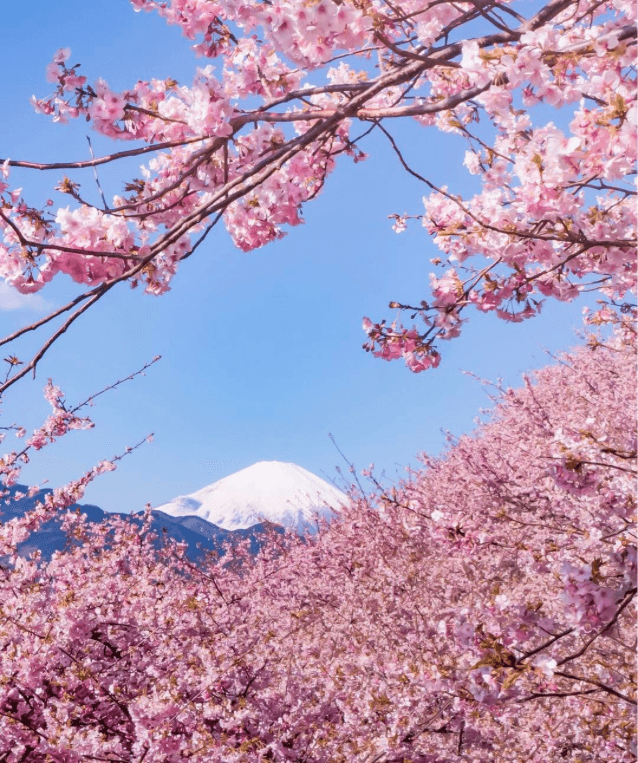by David Tharp
It was a striking contrast. A sleeping homeless man covered with a blanket in a light rain; stretched out on some cardboard under a cherry tree late at night in Ueno Park. The cherry blossom petals floated gently from above, covering him with a soft layer of white-pink.
Occasionally, the full moon showed through the clouds above the tree and man, the latter oblivious to the soft, stark beauty of which he was a part.
I was the only witness to this picture. The last remnants of hanami gaiety were being played out on the opposite side of the park in clusters of loud drinking and singing revelers. I wondered what the boisterous mobs would have made of this poetic scene.
There is an old Buddhist story about a monk who was set upon by a thief in his simple hut and robbed of all his belongings, such as they were. After the thief left, the monk sat down outside his hut and looked at the full moon shining down on his material destitution.
“Ah, but the thief can’t steal this beauty,” he said to himself, having some satisfaction that all the important elements of his life were still left intact.
When I sometimes despair about how lite treats myself and other people, I often recall stories about spring, the full moon and cherry blossoms.
One spring many years ago, I was riding on the then-Yamate Line late at night. It was cold, and the train was full of men and women returning home from work. Out of the corner of my eye, I noticed a man sitting next to me who began writing something on a piece of paper.
We pulled into a station and the doors opened. He got up and, without a word, passed me the piece of paper and went out the closing doors. “Ask me the meaning of the real Japan,” said the note, “and I will silently point to the cherry blossoms blooming at the foot of Mt. Fuji.”
This was the most eloquent “conversation” I ever had with anyone on a train anywhere in Japan, and it formed a kind of icon for communication that was possible without spoken words.
Or, there was the time I visited an onsen in the mountains outside Tokyo. I luxuriated in a large, old wooden tub looking out through open windows at a river flowing beside the onsen.
On the banks of the river were cherry trees in full bloom and, because of a sudden cold snap, there was a light snow falling as well. In the background, someone was playing the koto and satnisen. It was like a scene from a Kawabata Yusunari novel, and I was right in the middle of it.
And, there was the time when I first went to Hakone with a girlfriend, coming back from the lake by cable gondola over Jigoku no Tani, and then connecting with the cable car that runs down the mountain to the old Edo period resort of Gora.
There was a light mist wrapped around the cherry trees in late bloom. The petals were falling like snow with white and pink drifts of petals covering the tracks all the way down the mountain. No one said a word in that cable car. The mood was too magical to disturb. Those memories linger, the girlfriend long forgotten.
Then, there was the time I waited for another girlfriend at the end of a long row of cherry trees blossoming in the full glory of their delicate, poetic power. The girlfriend, with whom I had argued the previous day, came dressed in kimono down the long, tunnel-like row of trees as in the final scene in “The Third Man.”
Just like that film’s ending, she walked straight past me without a word, ignoring me and leaving me standing there with my regrets and the bitter-sweetness of the parting wrapped in a blur of sakura petals that tell on my face from above – like tears that matched the size of my own. Ah, the tender pain that sometimes goes with real lite hanami.
And, there are the cold, granite tombstones in the gaijin section of Aoyama Cemetery. Long forgotten graves of missionaries and teachers of the Meiji Era with no one to remember them by leaving a flower. But, the numerous cherry blossoms in the gaijin cemetery come to the rescue by wrapping the granite stones with a soft mantel and embrace of nature’s universal peace and love.
But, perhaps one of my most warm, memorable sakura experiences was early one morning coming out of a lady’s house within clear sight of Mt. Fuji across the bay from Kamakura. The winter snows still firmly circled Fuji’s summit. The house was awash with cherry blossoms from the trees surrounding the premises.
As I walked to the station for the first train to Tokyo, I wondered whether I would return to visit this lady again and, as I thought this, I reached into my coat pocket and found some money and a note sprinkled with cherry blossom petals — “Here is your train fare to Tokyo and the money for the return ticket.”
Call me a romantic, but in spite of all the images to the contrary, there is healing poetic power in sakura and hanami, perhaps equal to a few sessions or more of psychotherapy. If I must end my days sleeping on cardboard in a park somewhere, I would at least like to have the elegance of cherry blossom petals floating down to me in the light of a full moon.









